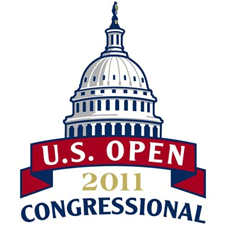U.S. Open week has arrived! This year’s national championship will be contested at Congressional Country Club in Bethesda, Maryland. Undoubtedly the USGA will set up Congressional to provide a stern test as it hosts its third U.S. Open (1964, Ken Venturi, 1997, Ernie Els).
The U.S. Open is known as the most demanding test in the game””challenging golfers’ patience and intestinal fortitude as much as their golf skill. One aspect of the U.S. Open that is not often discussed is the number of interesting and sometimes bizarre rulings that a U.S. Open site produces””rulings that you don’t typically see during a regular week on the PGA Tour.
One of the first of such rulings that comes to mind is the infamous, “double chip.” We all remember T.C. (“Two Chips”) Chen who fell victim to this embarrassing mishap in the 1985 U.S. Open at Oakland Hills. During the final round of that year’s Open, Chen found his ball in the notoriously deep U.S. Open rough and in an effort to firmly, yet softly extract the ball he hit the ball once at impact and a second time as his club followed through. It is a not a coincidence that this occurred during the U.S. Open as thick rough and lightning fast greens create the perfect opportunity to hit this dubious shot. Sean Micheel did the same thing at last year’s U.S. Open at Pebble Beach as he attempted a shot out of the thick rough surrounding a greenside bunker.
While this shot is somewhat rare, the ruling is actually simple and straight forward. Rule 14-4 states, “If a player’s club strikes the ball more than once in the course of a stroke, the player must count the stroke and add a penalty stroke, making two strokes in all.” Note that the rule is not titled “double hits” as most people tend to think. The rule is the same whether you strike the ball twice, or even three or four times””simply add one for the misfortune. Since this is a one-stroke penalty it applies to both stroke and match play competition.
Another ruling to look for in this year’s open is balls failing to remain at rest on the slick U.S. Open greens. As the USGA shaves down the Congressional greens to create a turf condition as near as possible to concrete, it is inevitable that some balls will move even after they come to rest. The ruling in this situation depends on whether or not the player has addressed the ball. For example, let’s say a player marks and lifts his ball on the putting green and replaces it. As the player is preparing to play the next stroke, and before he has addressed it (grounded his club and taken his stance) the ball starts to roll down a slope off the green and into the thick rough. Since the player did not cause the ball to move (had not addressed it) the ball would be played as it lies with no penalty (other than the fact that the player went from a putt from the green to a pitch from deep rough). Now, if the player had addressed the ball there would be a penalty of one stroke and the player would be required to replace the ball on the green.
One thing is for sure this week””it won’t be busy as usual for the players or for the officials! Here’s hoping that great shots, not unusual rulings take center stage this weekend as we crown the 2011 U.S. Open Champion. Enjoy, and Happy Father’s Day!


